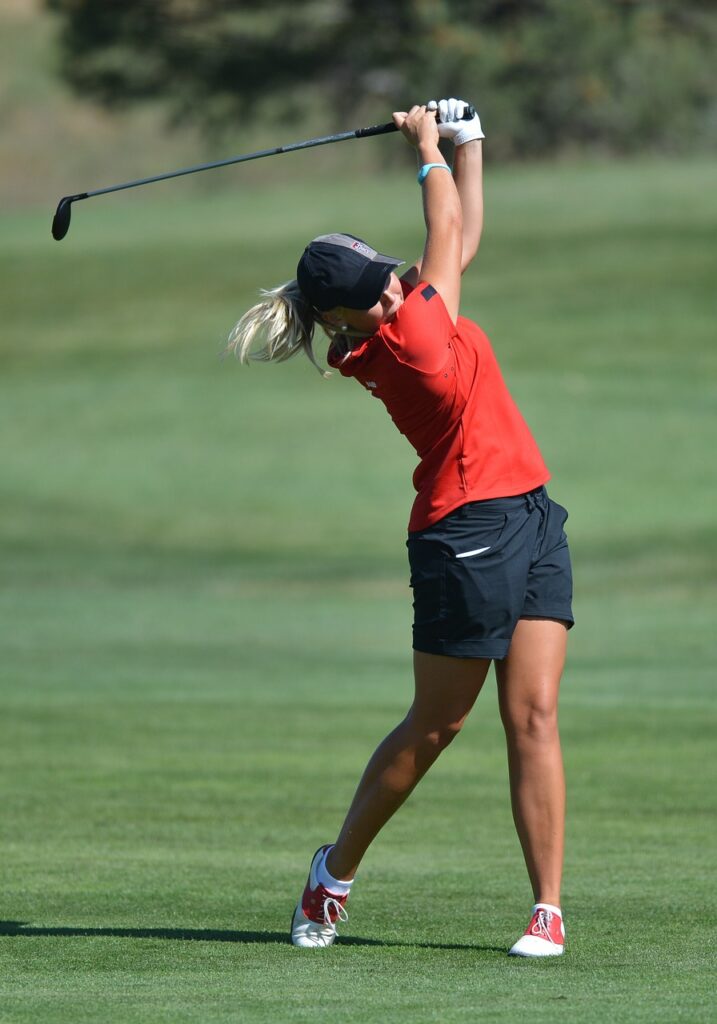Golf and Pilates
How is Pilates beneficial for a golfer?
Pilates can offer several benefits to golf players by enhancing their physical abilities and overall performance.
1. Core Strength: Pilates focuses on strengthening the core muscles, including the abdominal and back muscles. A strong core provides stability and power during the golf swing, allowing for better control, balance, and transfer of energy.
2. Flexibility: Golf requires a good range of motion in the shoulders, hips, and spine. Pilates exercises promote flexibility and joint mobility, enabling golfers to achieve a full and unrestricted swing. Increased flexibility can also help prevent injuries and promote a more fluid and efficient swing motion.
3. Posture and Alignment: Pilates emphasizes proper posture, alignment, and body awareness. It helps golfers develop better spinal alignment and a more neutral posture, leading to improved balance, optimal weight transfer, and more consistent ball-striking.
4. Stability and Balance: Golf involves stable and balanced movements throughout the swing. Pilates exercises target the deep stabilizing muscles, improving balance, control, and proprioception. Enhanced stability and balance contribute to a more controlled and consistent swing.
5. Breathing and Relaxation: Pilates incorporates breath control and relaxation techniques, which can help golfers manage stress and maintain focus during the game. Controlled breathing promotes relaxation and prevents tension, allowing for smoother swings and better shot execution.
6. Injury Prevention: Pilates exercises help strengthen the muscles around joints, reducing the risk of common golf-related injuries, such as lower back pain or golfers' elbow. Improved muscle balance and body mechanics also help prevent overuse injuries and promote overall body resilience.
In Acticade™ Golf and Pilates personal training, the shoulder, elbow, knee, and hip joints become stronger, more flexible, and more resilient, while the corresponding muscles relax.
Throwing sports
Medial epicondylitis aka golfer's elbow.
Rehabilitation

How is Pilates beneficial for a golfer?
Throwing sports
Medial epicondylitis aka golfer's elbow.
Rehabilitation

Pilates can offer several benefits to golf players by enhancing their physical abilities and overall performance.
1. Core Strength: Pilates focuses on strengthening the core muscles, including the abdominal and back muscles. A strong core provides stability and power during the golf swing, allowing for better control, balance, and transfer of energy.
2. Flexibility: Golf requires a good range of motion in the shoulders, hips, and spine. Pilates exercises promote flexibility and joint mobility, enabling golfers to achieve a full and unrestricted swing. Increased flexibility can also help prevent injuries and promote a more fluid and efficient swing motion.
3. Posture and Alignment: Pilates emphasizes proper posture, alignment, and body awareness. It helps golfers develop better spinal alignment and a more neutral posture, leading to improved balance, optimal weight transfer, and more consistent ball-striking.
4. Stability and Balance: Golf involves stable and balanced movements throughout the swing. Pilates exercises target the deep stabilizing muscles, improving balance, control, and proprioception. Enhanced stability and balance contribute to a more controlled and consistent swing.
5. Breathing and Relaxation: Pilates incorporates breath control and relaxation techniques, which can help golfers manage stress and maintain focus during the game. Controlled breathing promotes relaxation and prevents tension, allowing for smoother swings and better shot execution.
6. Injury Prevention: Pilates exercises help strengthen the muscles around joints, reducing the risk of common golf-related injuries, such as lower back pain or golfers' elbow. Improved muscle balance and body mechanics also help prevent overuse injuries and promote overall body resilience.
In Acticade™ Golf and Pilates personal training, the shoulder, elbow, knee, and hip joints become stronger, more flexible, and more resilient, while the corresponding muscles relax.
How is Pilates beneficial for a golfer?
Throwing sports
Medial epicondylitis aka golfer's elbow.
Rehabilitation

Pilates can offer several benefits to golf players by enhancing their physical abilities and overall performance.
1. Core Strength: Pilates focuses on strengthening the core muscles, including the abdominal and back muscles. A strong core provides stability and power during the golf swing, allowing for better control, balance, and transfer of energy.
2. Flexibility: Golf requires a good range of motion in the shoulders, hips, and spine. Pilates exercises promote flexibility and joint mobility, enabling golfers to achieve a full and unrestricted swing. Increased flexibility can also help prevent injuries and promote a more fluid and efficient swing motion.
3. Posture and Alignment: Pilates emphasizes proper posture, alignment, and body awareness. It helps golfers develop better spinal alignment and a more neutral posture, leading to improved balance, optimal weight transfer, and more consistent ball-striking.
4. Stability and Balance: Golf involves stable and balanced movements throughout the swing. Pilates exercises target the deep stabilizing muscles, improving balance, control, and proprioception. Enhanced stability and balance contribute to a more controlled and consistent swing.
5. Breathing and Relaxation: Pilates incorporates breath control and relaxation techniques, which can help golfers manage stress and maintain focus during the game. Controlled breathing promotes relaxation and prevents tension, allowing for smoother swings and better shot execution.
6. Injury Prevention: Pilates exercises help strengthen the muscles around joints, reducing the risk of common golf-related injuries, such as lower back pain or golfers' elbow. Improved muscle balance and body mechanics also help prevent overuse injuries and promote overall body resilience.
In Acticade™ Golf and Pilates personal training, the shoulder, elbow, knee, and hip joints become stronger, more flexible, and more resilient, while the corresponding muscles relax.